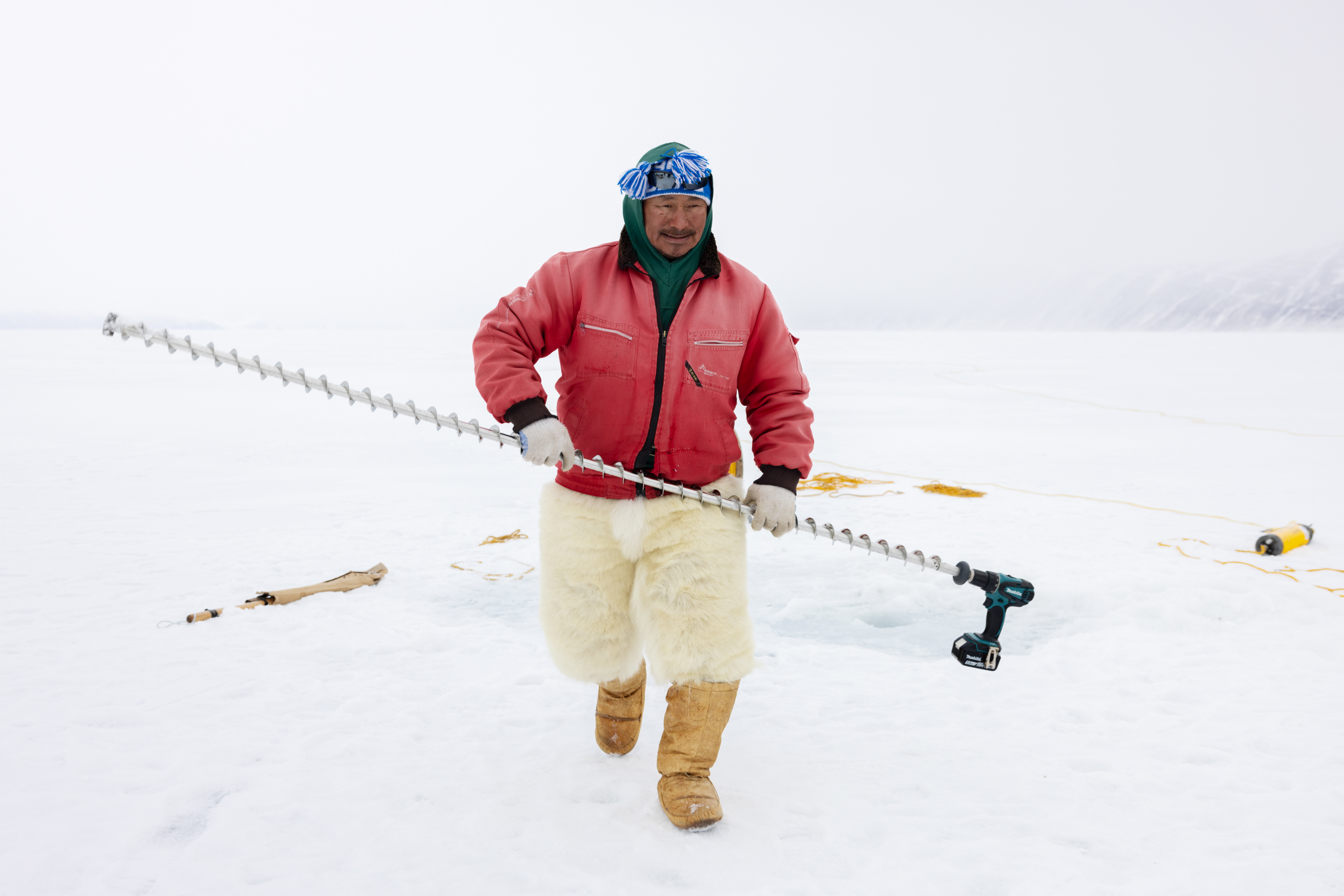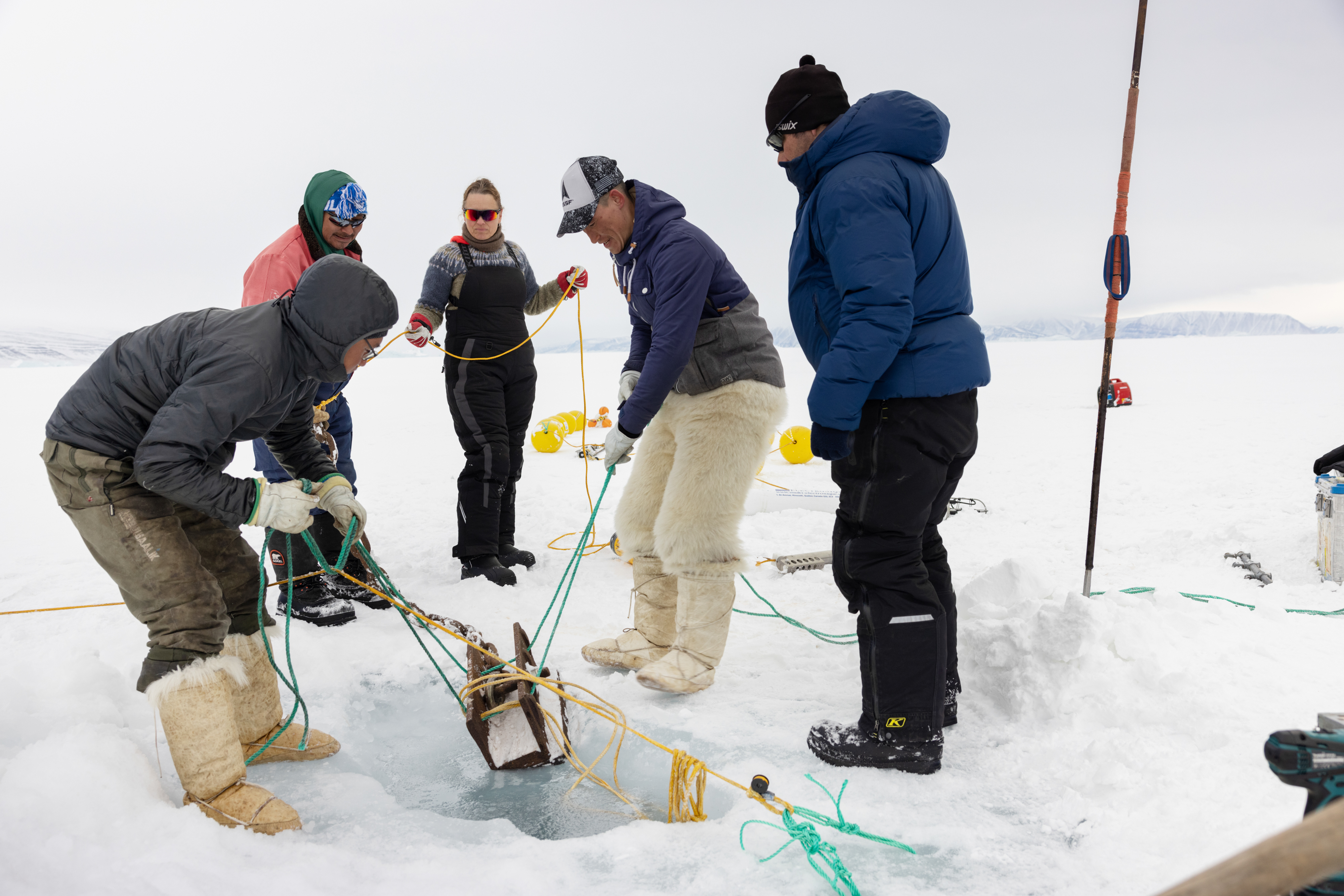Malene Simon Hegelund from the Greenland Institute of Natural Resources shared with us an update on the fieldwork in Qaanaaq for Arctic PASSION's community-based management work on Arctic marine climate change, noise pollution and impacts on marine living resources.
Springtime deployment of sound recorders are necessary to capture the sea ice breakup period when the important catch animals, such as narwhals and walrus arrive. However, this is not an easy task as the anchor and recording equipment are very heavy, making the transportation across sea ice and deployment through more than one metre thick sea ice challenging.
In mid-April, Arctic PASSION team successfully deployed sound recorders in Qaanaaq. The field team constituted of three hunters from Qaanaaq: Qillaq Danielsen, Gustav Simigaq and Quma Kvist, an oceanographer from the Danish Meteorological Institute, Steffen M. Olsen and senior scientist Malene Simon Hegelund, program coordinator Carl Isaksen and photographer Christian Sølbeck from the Greenland Institute of Natural Resources.
The team photographed in the field. From front left: Malene Simon Hegelund, Carl Isaksen, Gustav Simigaq and Quma Kvist. From back left: Christian Sølbeck, Steffen M Olsen and Qillaq Danielsen. Photo by Christian Sølbeck/Greenland Institute of Natural Resources.
Before the fieldwork, the team gathered in Qaanaaq to discuss the logistics and deployment method in detail. As this was the first time such heavy equipment was deployed on sea ice by this team, safety of people and equipment was in focus. The team selected the deployment locations based on the needs of the local community and the scientists, as well as on the local knowledge on movements of icebergs and animal migrations and other physical characteristics of these locations. We targeted areas that are less likely to overlap with long-line fisheries.
Left: Meeting prior to fieldwork discussing the deployment locations and methods. From left to right Gustav Simigaq, Malene Simon Hegelund, Carl Bror Isaksen, Steffen M Olsen, Qillaq Danielsen (Back). Right: Planning the mooring locations. From left to right. Steffen M Olsen, Qillaq Danielsen, Gustav Simigaq, Carl Bror Isaksen. Photo by Christian Sølbeck/Greenland Institute of Natural Resources.
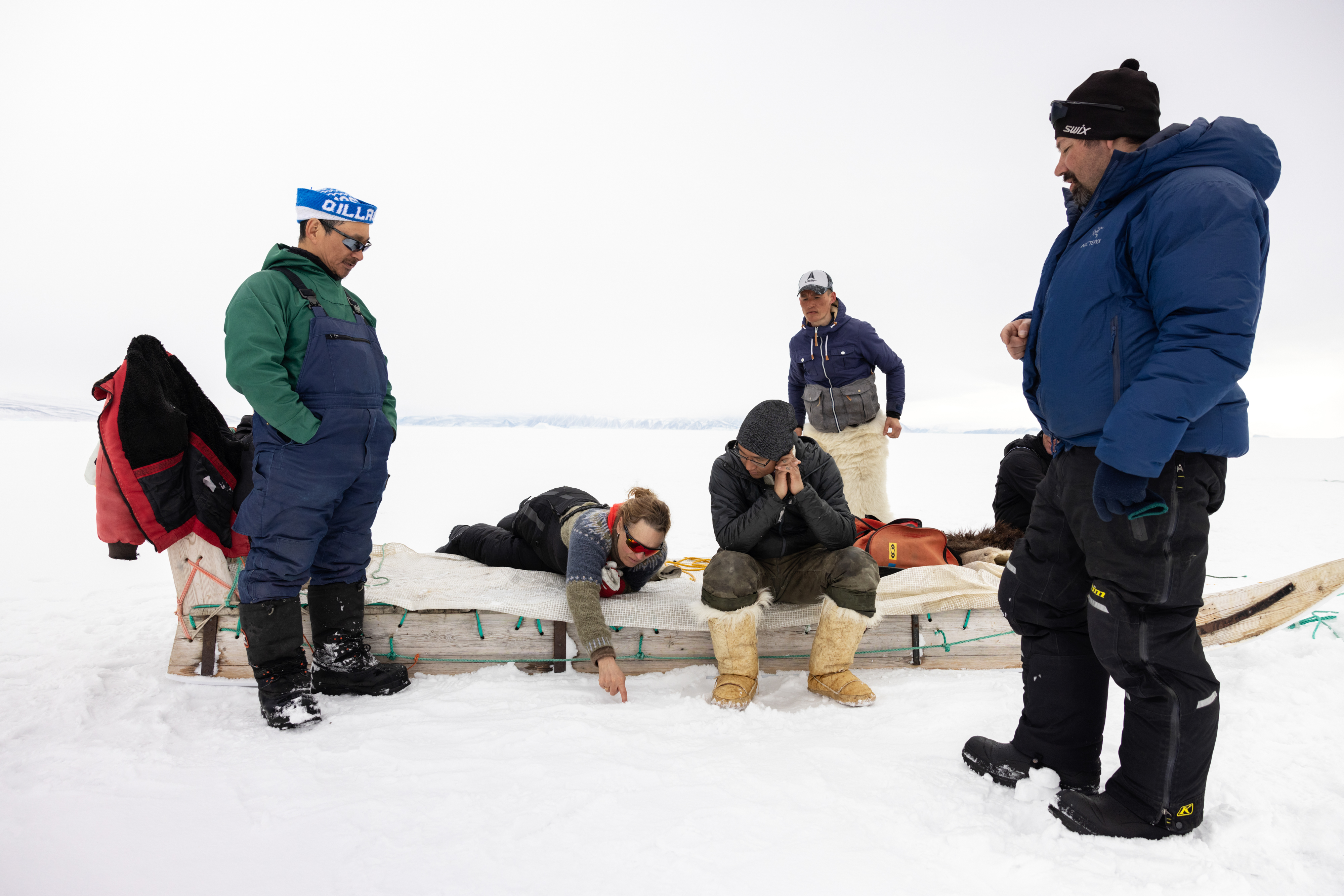 On the ice, planning next mooring deployment. From left to right Qillaq Danielsen, Malene Simon Hegelund, Gustav Simigaq, Quma Kvist and Carl Bror Isaksen. Photo by Christian Sølbeck/Greenland Institute of Natural Resources.
On the ice, planning next mooring deployment. From left to right Qillaq Danielsen, Malene Simon Hegelund, Gustav Simigaq, Quma Kvist and Carl Bror Isaksen. Photo by Christian Sølbeck/Greenland Institute of Natural Resources.
The anchor and instruments were transported to the deployment locations with a dog sledge team of three sledges. A hole was made in the sea ice with electric drills and the traditional tool, istuk. The most risky part of the deployment procedure was to lower the mooring into the seawater at a controlled pace to secure that the instruments remained undamaged and the several 100 metres long line did not get entangled. This procedure was strongly inspired by the method the hunters use for hauling walruses from the water to the sea ice after shooting them. We built a sea ice anchor and used a dog sledge as an on-land anchor to control the pace when lowering down the ~100 kg iron anchor as well as the full mooring line and instruments into the water. This worked very well and the full deployment process only took 15 minutes.
Two types of sound recorders (Aural M2 and Soundtrap) were deployed together with a salinity and temperature logger (seabird). The instruments were attached to a line with an acoustic release (PORT) to detach the instruments from the iron anchor at the bottom when needed.
Left: Qillaq Danielsen and Malene Simon Hegelund guiding the mooring line during deployment to make sure it is not entangled. Right: Building the mooring on the sea ice with instruments and buoys. From left to right Carl Bror Isaksen and Malene Simon Hegelund Photo by Christian Sølbeck/Greenland Institute of Natural Resources.
Left: Qillaq Danielsen with the ice drill. Right: Deployment of the mooring through the one metre thick sea ice. From left Gustav Simigaq, Qillaq Danielsen, Malene Simon Hegelund, Quma Kvist and Carl Bror Isaksen. Photo by Christian Sølbeck/Greenland Institute of Natural Resources.
During the stay in Qaanaaq, we engaged with the community members in different ways to share knowledge about our research with the community and to listen to their needs, ideas and concerns. We gave a talk in the local school, we had one to one meetings or smaller groups of gatherings and during an evening event in the local community hall we gave talks about sounds of the marine mammals and oceanography. We also presented the on-going work in Qaanaaq as well as our future plans. The feedback from the community included concerns for instrument interference on hunting, wildlife and long-line fisheries. We discussed possible implications and which actions we have taken to avoid them. Other feedback included concerns on potential impact on hunting quotas, the immediate need for better information about all science activities in the area, the need for research on unexplained massive fish kill and improved knowledge on the ocean bathymetry to help identify new fishing spots.
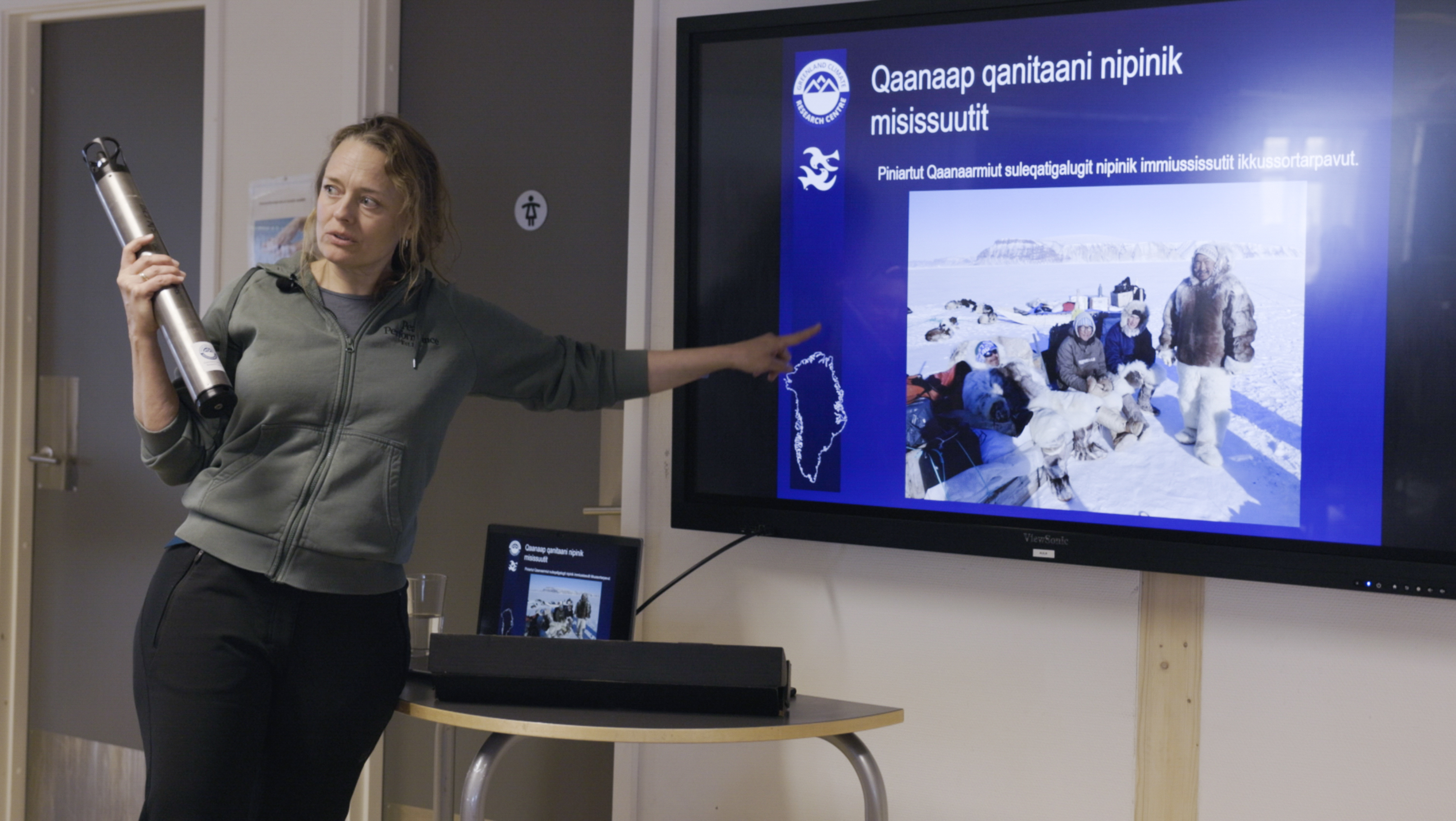
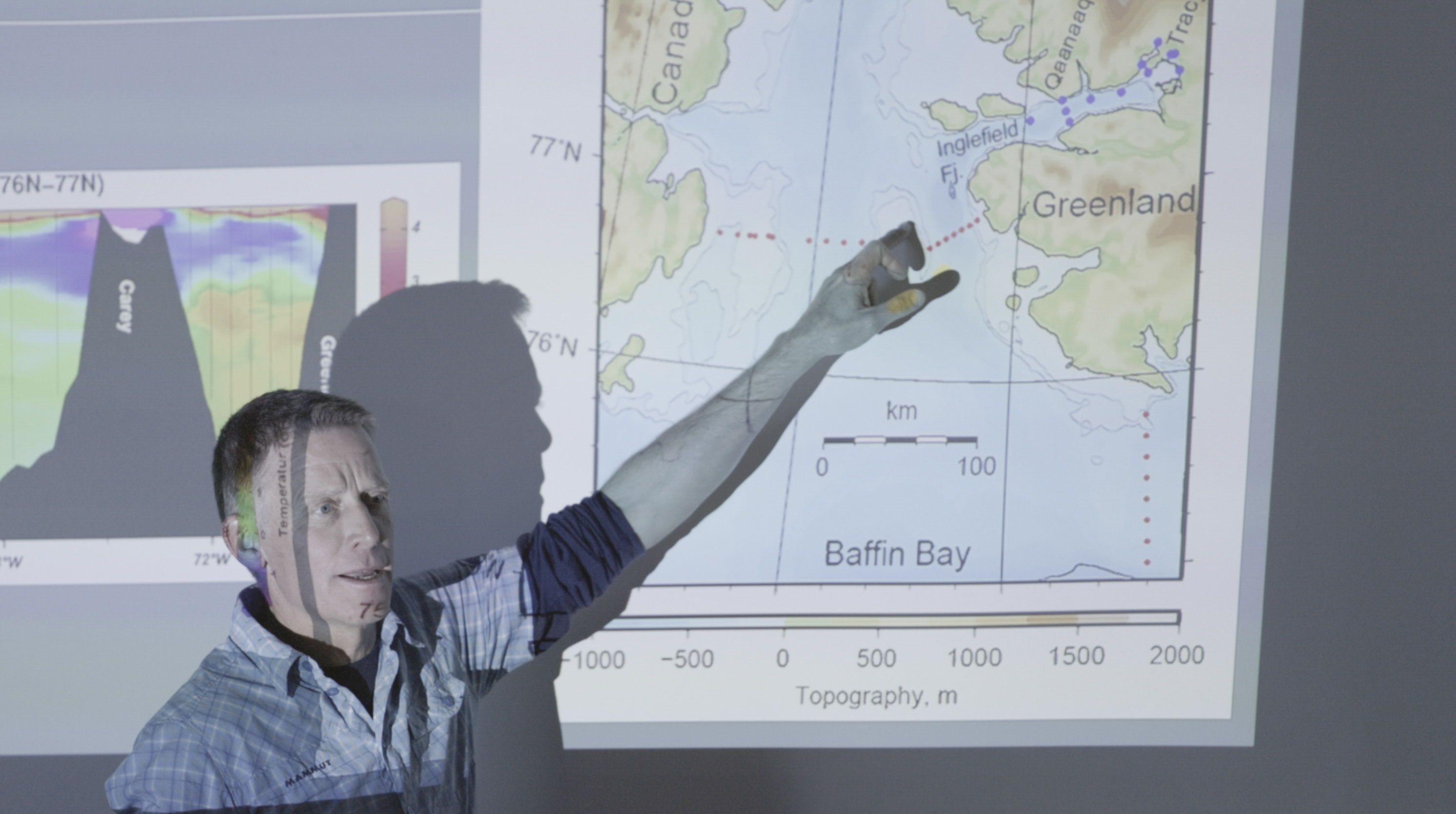
Left: Malene visiting the local school showing some of the instruments we deploy and pictures of the deployment on the sea ice. Right: Town meeting. Steffen M Olsen explaining the ocean currents and sea ice development and reporting on results from earlier research from DMI. Photo by Christian Sølbeck/Greenland Institute of Natural Resources.
Left: Town meeting. Locals from Savissivik, a village near Qaanaaq, listening and discussing the presentation. Olennguaq Kristensen and his son. Right: Malene explaining the mooring set up and the deployment to the people of Qaanaaq city. Photo by Christian Sølbeck/Greenland Institute of Natural Resources.
Future plans
Until September, we will analyze the data and develop a suggestion for a visual atlas and other ways of presenting our data to different users. This suggestion will be presented and discussed during our next fieldwork in Qaanaaq. The instruments deployed in April will be recovered in September by boat and a new mooring will be deployed to record during the fall and winter period.
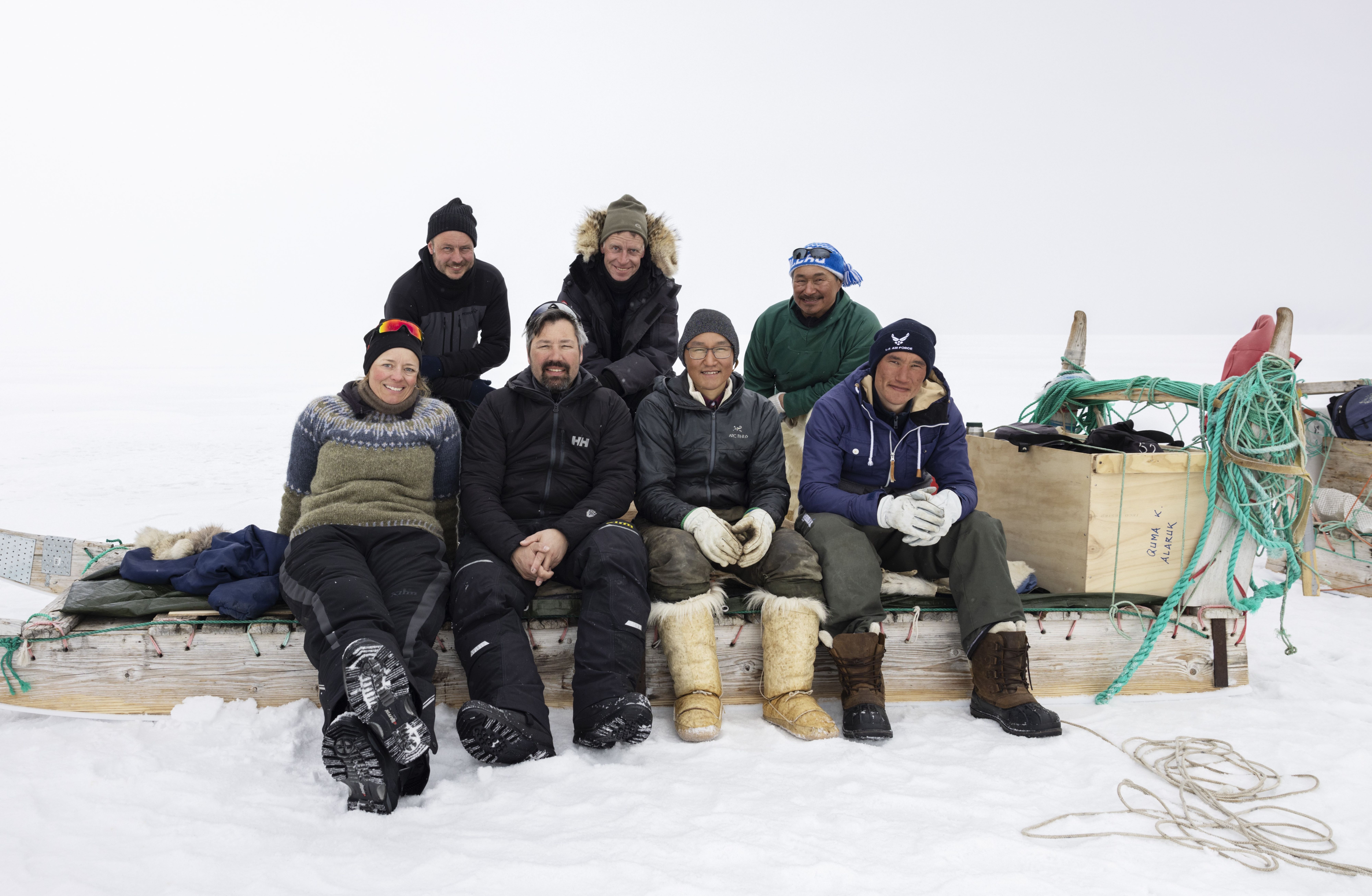
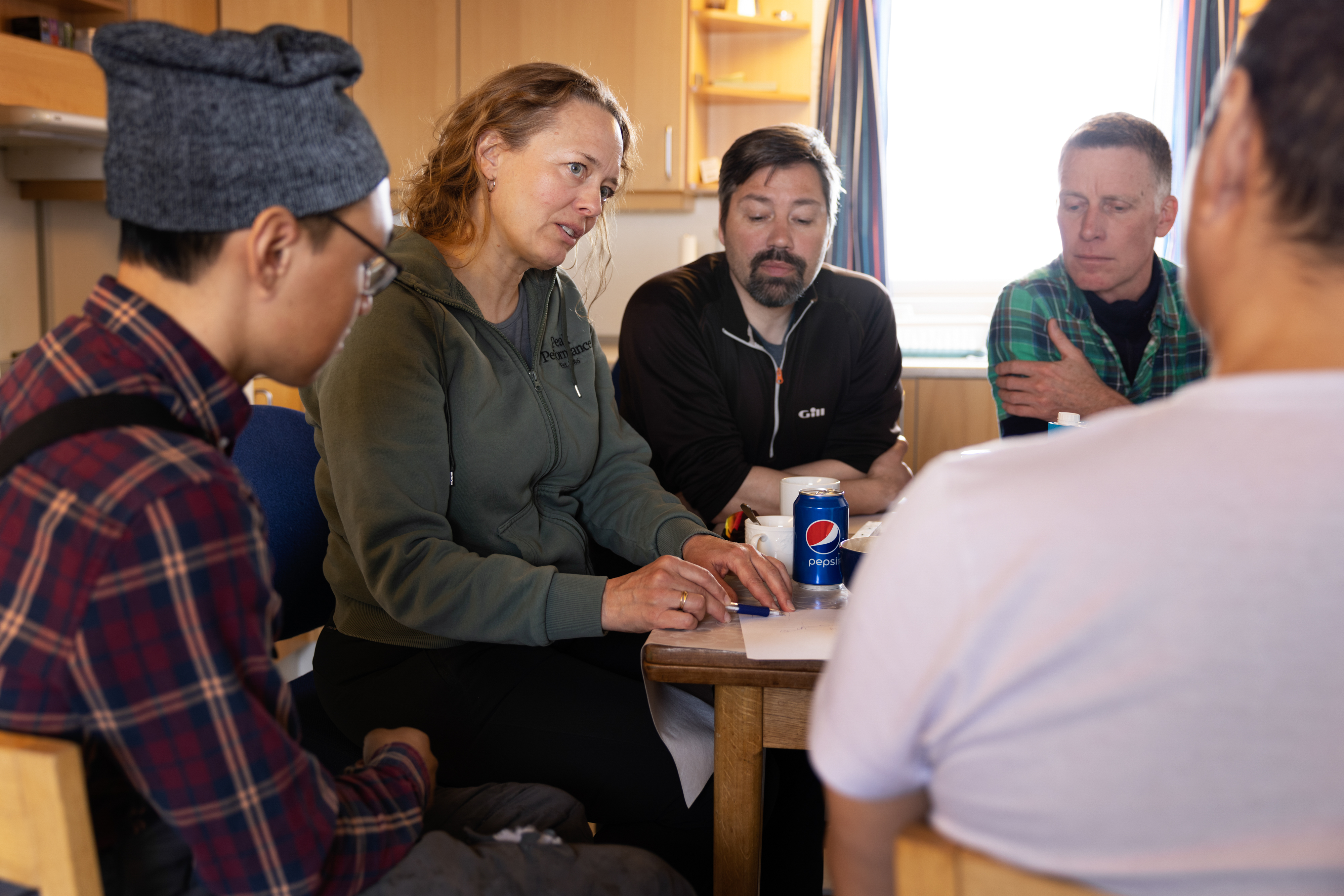

 On the ice, planning next mooring deployment. From left to right Qillaq Danielsen, Malene Simon Hegelund, Gustav Simigaq, Quma Kvist and Carl Bror Isaksen. Photo by Christian Sølbeck/Greenland Institute of Natural Resources.
On the ice, planning next mooring deployment. From left to right Qillaq Danielsen, Malene Simon Hegelund, Gustav Simigaq, Quma Kvist and Carl Bror Isaksen. Photo by Christian Sølbeck/Greenland Institute of Natural Resources.

